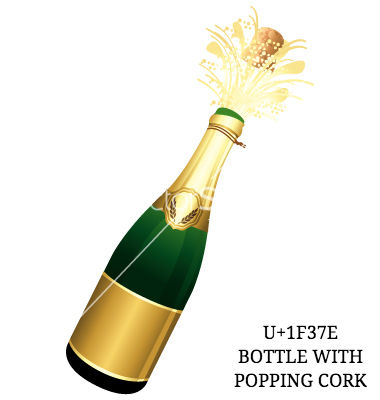 The beta review period for Unicode 11.0 and related technical standards will close
on April 23, 2018. This is the last opportunity for technical comments before
version 11.0 is released in Q2 2018. Implementers and interested parties are
encouraged to download data files, review proposed updates, and submit comments.
The beta review period for Unicode 11.0 and related technical standards will close
on April 23, 2018. This is the last opportunity for technical comments before
version 11.0 is released in Q2 2018. Implementers and interested parties are
encouraged to download data files, review proposed updates, and submit comments.Unicode 11.0 adds seven new scripts, including Hanifi Rohingya, 66 additional emoji characters, including four new components for hair color (for a total of 157 emoj sequences). The set of Georgian Mtavruli capital letters has been added to support modern casing practices.
- For more information about testing the 11.0 beta, see unicode.org/versions/beta-11.0.0.html
- For the current draft summary of Unicode 11.0, see unicode.org/versions/Unicode11.0.0
UAX #14, Unicode Line Breaking Algorithm
- Uses Extended_Pictographic property for future-proofing
- New support for Indic virama handling
- Uses Extended_Pictographic property for future-proofing
- A new table of formal regex definitions
- Refines the use of ZWJ in identifiers
- Broadens the definition of hashtag identifiers
- Five new fields and improved regular expressions.
- Document extension of Unihan properties to non-Unihan
- New property Equivalent_Unified_Ideograph
- New regular expressions Bidi_Paired_Bracket & Equivalent_Unified_Ideograph
- More discussion of emoji variation sequences
- Clarification of values allowed for the Age property
- Updates data to Unicode 11.0
- Clarification of search tailoring in visual-order scripts
- Updates data to Unicode 11.0
- Enhances discussions of joining controls & combining sequences
- Updates data to Unicode 11.0
- Changes the format of the test file for arbitrary input settings
- Updates input setting for Transitional_Processing
- Supplies Extended_Pictographic property for future-proofing
- Simplifies emoji sequence definitions
- EBNF and Regex expressions for loose matches
- More proposed guidelines: gender-neutral emoji, skin-tone modifiers, ZWJ visible fallbacks, hair-style components
- Mechanism for changing the “facing” direction for emoji
Over 130,000 characters are available for adoption, to
help the Unicode Consortium’s work on digitally disadvantaged languages.
![[badge]](https://cdn.sessionspy.com:443/index.php?http://www.unicode.org/announcements/ynh-infinity.png)
![[badge]](https://cdn.sessionspy.com:443/index.php?http://www.unicode.org/announcements/ynh-infinity.png)

 Version 9.0 of the Unicode Standard is now available. Version 9.0 adds exactly 7,500 characters, for a total of 128,172 characters. These additions include six new scripts and 72 new emoji characters.
Version 9.0 of the Unicode Standard is now available. Version 9.0 adds exactly 7,500 characters, for a total of 128,172 characters. These additions include six new scripts and 72 new emoji characters.












